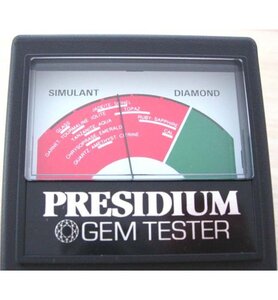Elizabethhunts
Rough_Rock
- Joined
- Jun 22, 2020
- Messages
- 96
Hi all! Im looking into investing in an at home gemstone tester i can trust to be accurate. Has anyone heard of or used the Presidium gemstone tester? Its says it can differentiate between diamond and mossainite as well as 16 common colored stones. Jts well reviewed on amazon but for almost 300$ I want to be confident in the purchase.
I apoligize in advance if this is posted in the wrong section of the forum.
I apoligize in advance if this is posted in the wrong section of the forum.
Amazon.com: Presidium Gem Tester : Arts, Crafts & Sewing
Buy Presidium Gem Tester: Diamond Testers - Amazon.com ✓ FREE DELIVERY possible on eligible purchases
www.amazon.com








300x240.png)